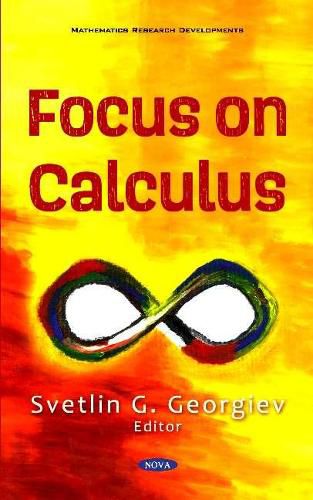Readings Newsletter
Become a Readings Member to make your shopping experience even easier.
Sign in or sign up for free!
You’re not far away from qualifying for FREE standard shipping within Australia
You’ve qualified for FREE standard shipping within Australia
The cart is loading…






This book is devoted to some recent aspects of calculus. The book contains seven chapters. Chapter 1 introduces the conception for conformable delta (Hilger) derivative and some of its properties. Results in this chapter include basic conformable delta derivative, the conformable exponential function, conformable trigonometric and hyperbolic functions, conformable delta integral and integral rules and Taylor’s formula. They are considered first order conformable dynamic equations on time scales. Chapter 2 is devoted to some classes second order quadratic difference equations. They are given criteria for existence of a unique equilibrium point that is stable and unstable, existence of prime period-two solutions. Chapter 3 is aimed to develop two calculi over the specific algebraic operations, preserving the preceding relativistic addition formula and having all ordinary properties. Chapter 4 is devoted to principles of hypercomplex random function calculus. Generalized Gaussian-type hypercomplex valued measures are studied. Random functions controlled by these measures are investigated. Solutions of hyperbolic PDEs over hypercomplex numbers such as the octonion algebra and Cayley-Dickson algebras are scrutinized. Chapter 5 covers the interesting historical aspects of the spreadsheets and their distinct advantages. It is described how the ubiquitous Microsoft Excel spreadsheets can be used to implement well-known numerical methods such as Simpson’s Rule and Trapezoidal Rules. Appropriate examples are presented in substantial detail. The aim of Chapter 6 is to show some didactic tools that can be suggested by professors so that students can recall those issues saved in the deepest part of their minds. In Chapter 7, based on fractional differences, a fractional calculus is developed which complies with most of the properties that is to say non-differentiability, non-commutativity of derivative and long-range memory. The book is addressed to a wide audience of specialists such as mathematicians, physicists, engineers and biologists.
$9.00 standard shipping within Australia
FREE standard shipping within Australia for orders over $100.00
Express & International shipping calculated at checkout
This book is devoted to some recent aspects of calculus. The book contains seven chapters. Chapter 1 introduces the conception for conformable delta (Hilger) derivative and some of its properties. Results in this chapter include basic conformable delta derivative, the conformable exponential function, conformable trigonometric and hyperbolic functions, conformable delta integral and integral rules and Taylor’s formula. They are considered first order conformable dynamic equations on time scales. Chapter 2 is devoted to some classes second order quadratic difference equations. They are given criteria for existence of a unique equilibrium point that is stable and unstable, existence of prime period-two solutions. Chapter 3 is aimed to develop two calculi over the specific algebraic operations, preserving the preceding relativistic addition formula and having all ordinary properties. Chapter 4 is devoted to principles of hypercomplex random function calculus. Generalized Gaussian-type hypercomplex valued measures are studied. Random functions controlled by these measures are investigated. Solutions of hyperbolic PDEs over hypercomplex numbers such as the octonion algebra and Cayley-Dickson algebras are scrutinized. Chapter 5 covers the interesting historical aspects of the spreadsheets and their distinct advantages. It is described how the ubiquitous Microsoft Excel spreadsheets can be used to implement well-known numerical methods such as Simpson’s Rule and Trapezoidal Rules. Appropriate examples are presented in substantial detail. The aim of Chapter 6 is to show some didactic tools that can be suggested by professors so that students can recall those issues saved in the deepest part of their minds. In Chapter 7, based on fractional differences, a fractional calculus is developed which complies with most of the properties that is to say non-differentiability, non-commutativity of derivative and long-range memory. The book is addressed to a wide audience of specialists such as mathematicians, physicists, engineers and biologists.